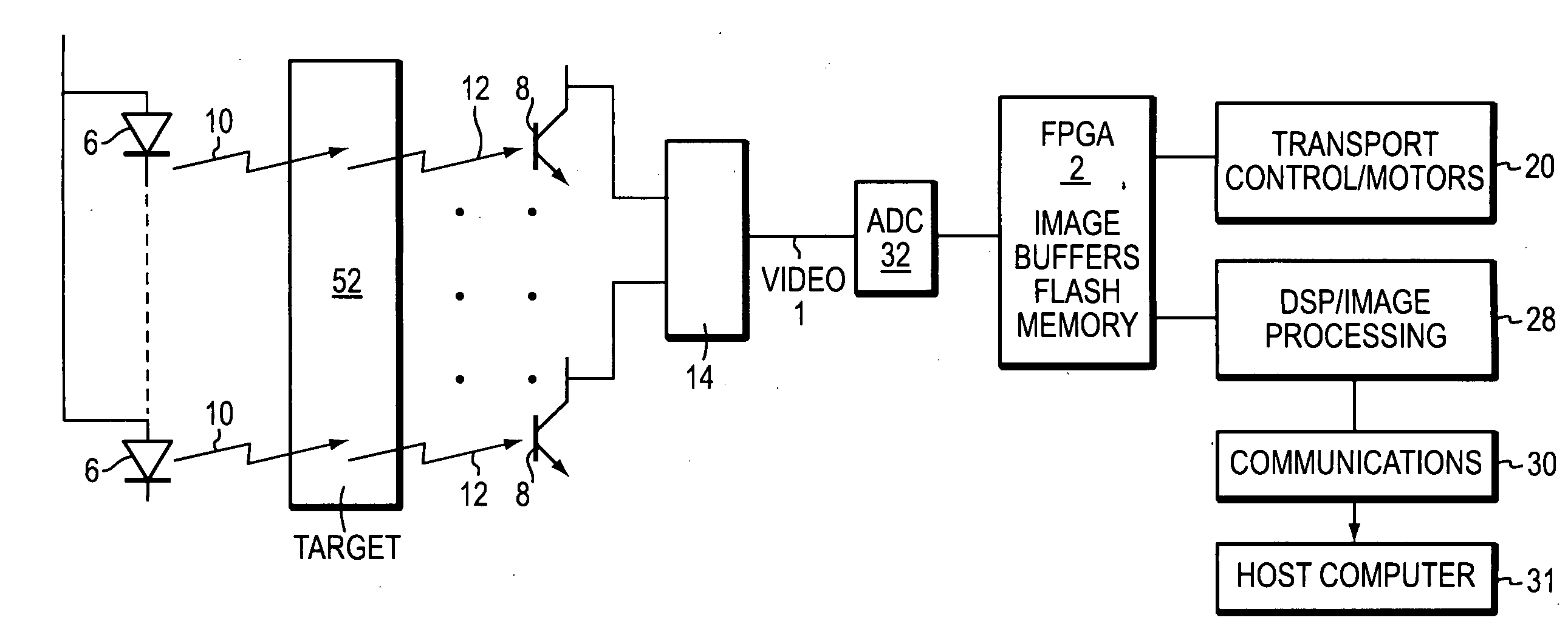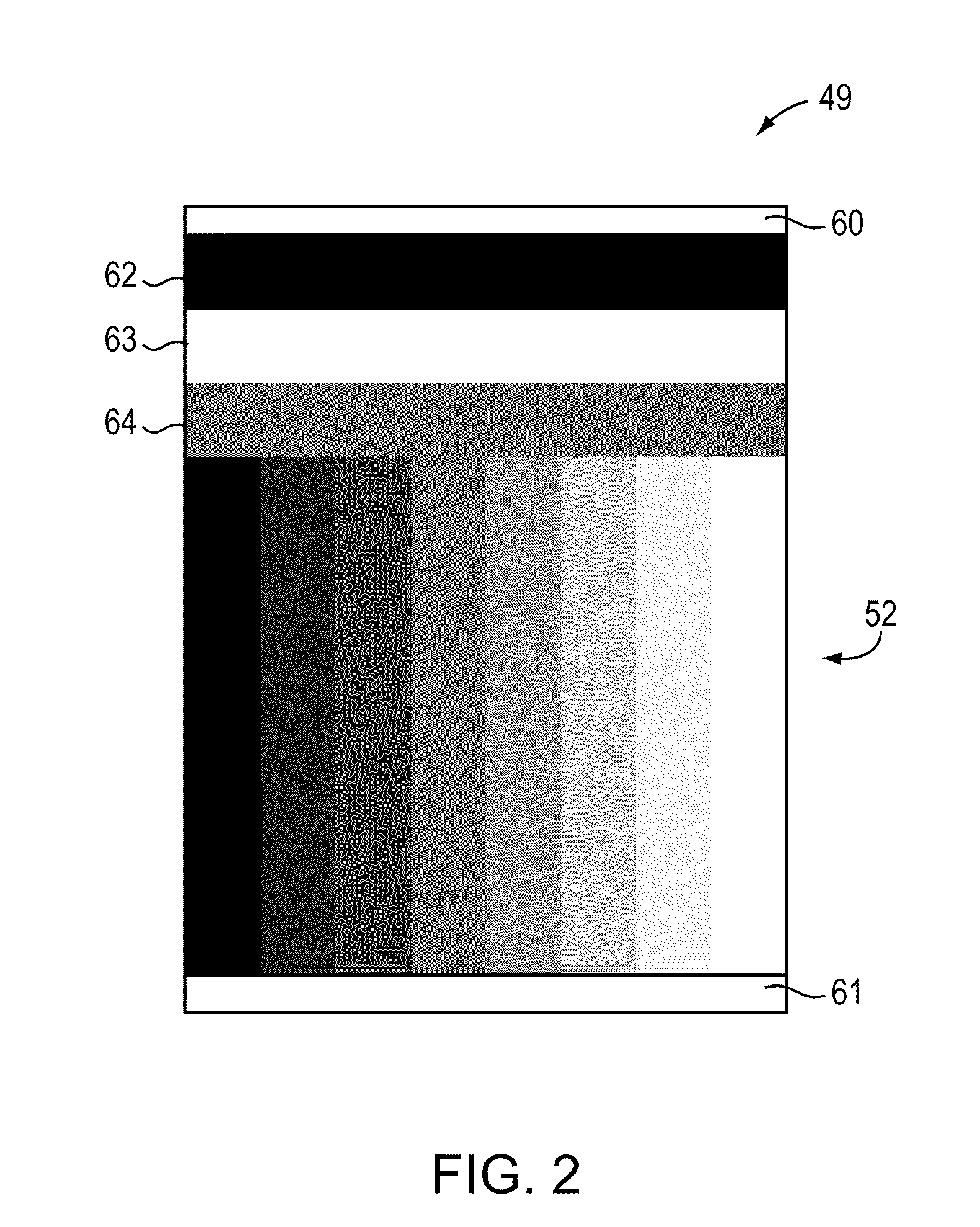Optical reader quality factor
a technology of optical readers and quality factors, applied in the field of manufacturing, field service, maintenance and performance aspects of optical readers and components, can solve the problems of loss of calibration of readers, change in characteristics, cost, unfriendly customers, etc., and achieve the effect of little or no down time for users
- Summary
- Abstract
- Description
- Claims
- Application Information
AI Technical Summary
Benefits of technology
Problems solved by technology
Method used
Image
Examples
Embodiment Construction
[0028]Restating from above, an optical reader may be calibrated to read a typical black to white gray scale dynamic range, and a particular mid-level gray area may be selected for generating a quality factor (QF). The present invention provides a system and method for calculating a QF and approving an optical reader for shipment to a user. That QF may be calculated and tracked during the service life of the reader to monitor its performance and schedule service if the QF of the reader changes over a QF standard threshold. A QF standard may be developed, over time from experience for the reader or a reader family, wherein the standard includes a triggering threshold determined from experience. Exceeding a trigger threshold may prompt the need to schedule a service call for the reader, importantly before a field failure. The present invention also may apply regardless of how the optical reader is calibrated.
[0029]Briefly, calibrating an optical reader entails balancing the optical and...
PUM
 Login to View More
Login to View More Abstract
Description
Claims
Application Information
 Login to View More
Login to View More - R&D
- Intellectual Property
- Life Sciences
- Materials
- Tech Scout
- Unparalleled Data Quality
- Higher Quality Content
- 60% Fewer Hallucinations
Browse by: Latest US Patents, China's latest patents, Technical Efficacy Thesaurus, Application Domain, Technology Topic, Popular Technical Reports.
© 2025 PatSnap. All rights reserved.Legal|Privacy policy|Modern Slavery Act Transparency Statement|Sitemap|About US| Contact US: help@patsnap.com



